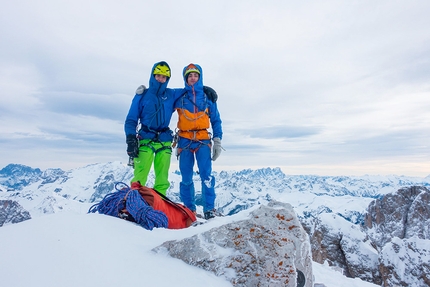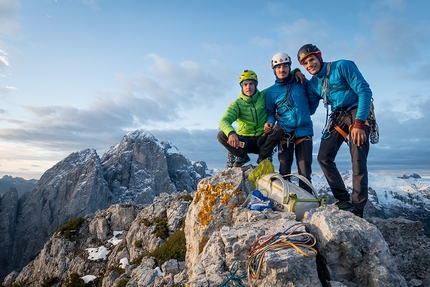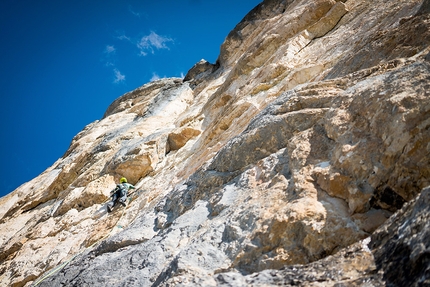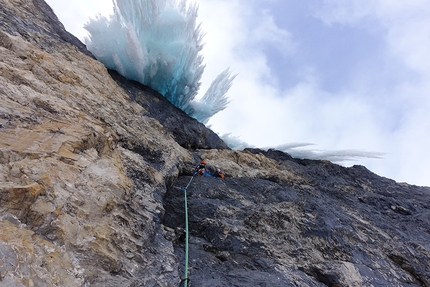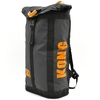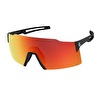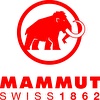Demanding Dolomites climb by Martin Dejori, Titus Prinoth, Alex Walpoth
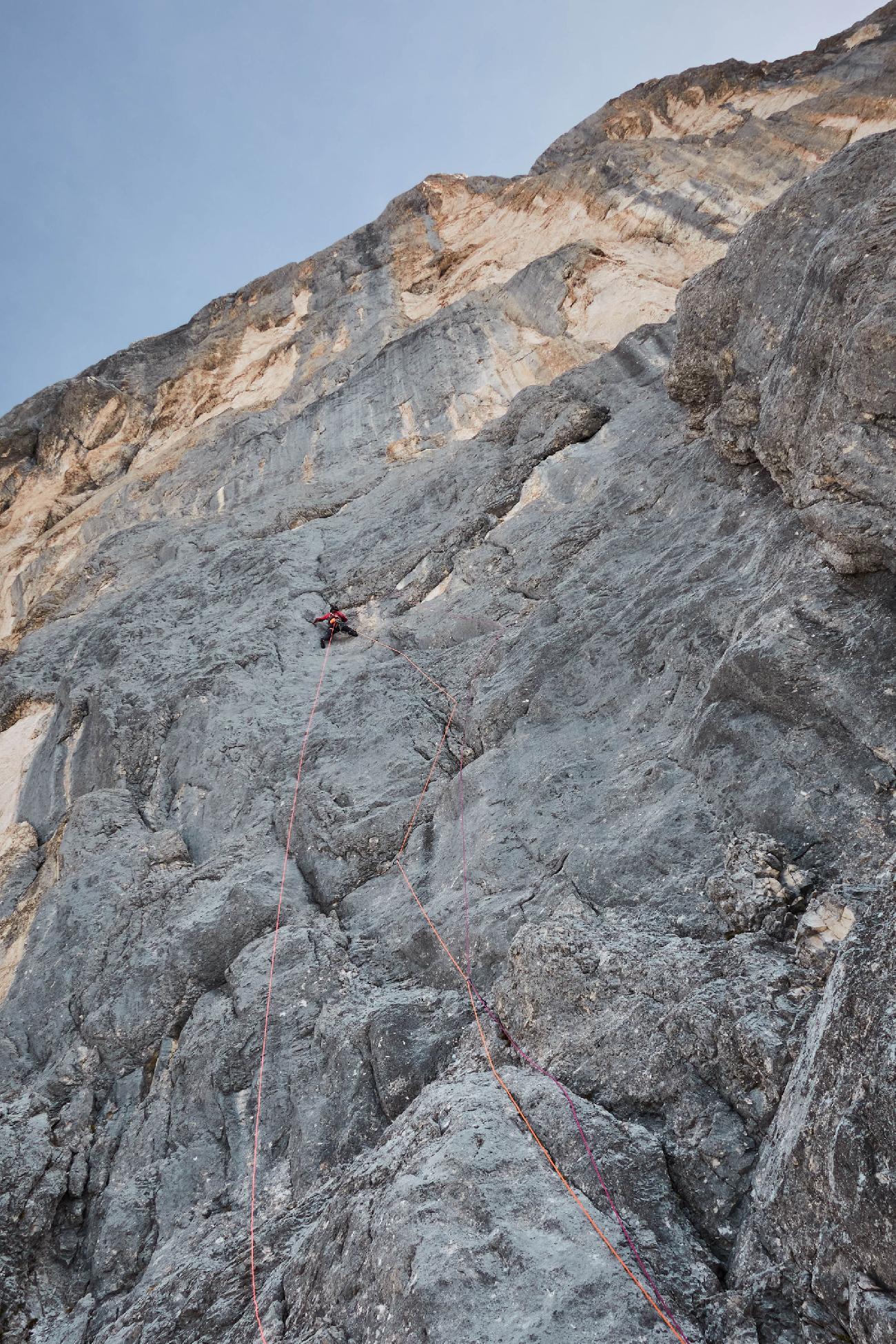
 1 / 19
1 / 19 Martin Dejori, Titus Prinoth, Alex Walpoth
Martin Dejori, Titus Prinoth, Alex Walpoth
A while ago Titus, Martin and I decided to try and establish a new route every year. We believe that autumn is the best time of year for these adventurous challenges, and so on 4 October we set off towards Antelao. Its south-west face is enormous, jagged, up to a thousand meters high and currently hosts only a few routes which have seen only a handful of repeats.
Last year, between the routes put up by Bee and the Bettella - Scalco we identified a nice portion of rock that was still unclimbed. The lower part seemed easy and without any defined features, while the so-called headwall promised to be a very interesting challenge. Access to the wall turned out to be long and tiring through a thick forest of mountain pines.
In the morning we were grateful for the clouds that covered the sun, but once we reached the start it began to drizzle. We found shelter in a gully, but the stream quickly swelled, giving us a good indication as to the size of the face. Luckily it soon stopped raining and we continued by scrambling upwards without a rope past easy terrain. When we reached a steeper section we were engulfed in thick fog, and route finding became complicated. We came across a small cave and rested for two hours. Visibility failed to improve, as did our morale. By now it was afternoon and the days in October are short.
Instead of letting laziness get the better of us, we started climbing. Titus climbed five pitches of very beautiful rock. Martin and I followed quickly, regularly freeing the bags stuck below some ledges. On the photos of the face we had noticed a place to bivouac in what seemed like a hole. Once there, reality exceeded our expectations. The hole was in fact huge, about ten meters deep. In short, a real cave, where we enjoyed a quiet and restful night.
At dawn we quickly set off again, confident in what the day would bring. Soon we reached the headwall, marked by a compact grey and yellow limestone. We knew it would be hard to breach this with pegs only. But we had no choice, because we hadn't brought any bolts with us! There were some cracks on the left, but the rock seems less soli there so we opted to climb straight following a wide, smooth grey stripe.
Martin took the lead. He climbed a beautiful, fifty meter slab broken here and there by short cracks. The climbing proved challenging and exposed. Martin managed to drive in some runout pegs. As I seconded him I fully savoured the climbing and couldn't wait to take my turn as the leader.
I quickly climbed up the first few meters. A bomber friend provided me with confidence I needed to continue up the unprotected slab. The next crack was very far away. I was about to give up when I find a good hold in a thin crack. A small peg entered with just a few blows. I weighted it, then risked a short fall to test it, it held. After a few attempts I managed to solve the slab. But the next crux already awaited me, higher up, much steeper, but luckily with more holds. Establishing a good belay is another challenge on rock as compact as this one, but thanks to a good choice of pegs and three sets of cams we always felt safe.
Now it was time for Titus to take the lead. The first few meters breached superlative rock and flowed quickly, then with the help of a pendulum he gained an open corner. We couldn't see him anymore, only sporadically did we hear some blows of the hammer. The ropes slid out slower and slower. At a certain point Titus ended up high above us, but behind an arete. He was disappointed, because it was impossible to find a place to belay, and above him the wall got steeper and steeper. We decided to call it a day and establish a belay lower down. Titus then lowered himself off an poor pecker.
Now we were face with two problems, the technical difficulties that lay above us and the night the was about to fall. We huddled at th belay and took stock of the situation. Titus has no choice but to climb back up to the pecker. He then managed to climb a few more meters to an thread, which made him hopeful. He too wanted to experience a fall, in order to get rid of his fears. He did so more than once. By now it was getting dark and we had to rappel as we hadn't brought a portaledge with us. We abseiled to the ledge at the start of the headwall. Everyone worked hard to make the ledge flatter, but despite our effort the night was far less comfortable than the previous one.
The only good thing about a bad night is the desire to climb again the next morning. In fact, we jumared up the rope at first light. Titus started his day by taking a couple of falls, and this proved a great way to wake up! He reached a tiny crack and managed to place a pecker. He slowly weighted it as we held our breath. It held, and Titus managed to gain a meter. Now though he couldn't find even the smallest ripple for a cliffhook, and he was forced to abandon aid climbing. Thanks to some extremely difficult free climbing he manages to breach the most repulsive section of the slab. But it wasn't over yet, another fifteen meters of challenging climbing followed with precarious and runout gear.
After challenging and exhausting Titus for over three hours, the wall became benevolent once again. The pitch ended on a narrow ledge. The southwest face of Antelao, however, still didn't give up. The next two pitches were characterised by a series of fantastic cracks, reached only via some hard slab sections.
Martin was faced with a difficult slab just above the belay which he preferred to climb using aid so as not to fall directly onto us. I for my part experienced my moment of fear by breaching a loose roof at the end of my pitch, with my cams way below me hidden in the fog.
The clouds, with us more or less all day, thinned out as soon as we left the headwall. The low sun provided us with some warm light, comparable to the sensation of warmth we felt inside. There had been moments when we thought we maybe wouldn't make it, that we would have to traverse across onto nearby Via Bee. But once again our team of three proved perfect, as at least one of us was always so confident that he managed to convince the other two to continue on.
At sunset we rejoiced on the pre-summit. However, the true summit of Antelao was still far away and the route to get there seemed complicated, so we spent another night on the wall, on a comfortable ledge facing east. Thew next morning we absorbed the first rays of a new day; these released hidden energies in us and helped us reach the summit and descend to the valley fast and light, also because we had run out of food and water.
by Alex Walpoth
Link: www.gagherdeina.com



 Copia link
Copia link

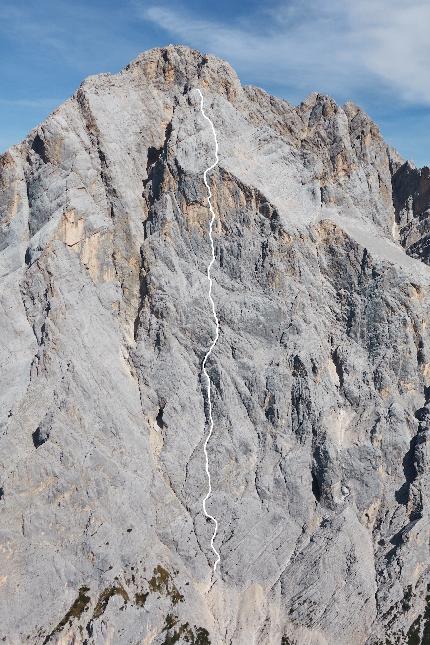










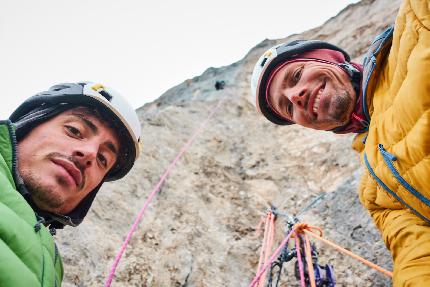






 See all photos
See all photos